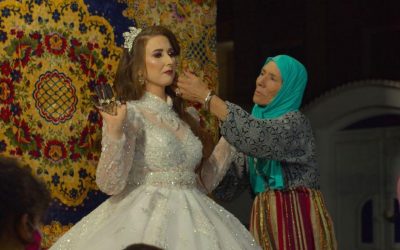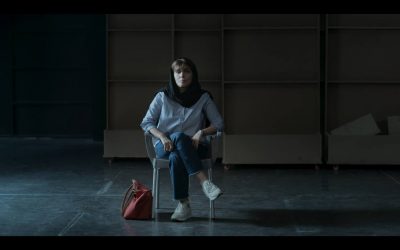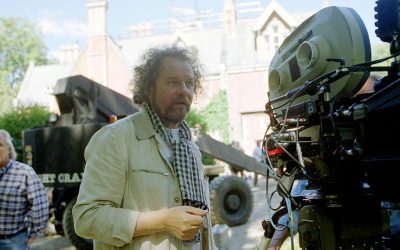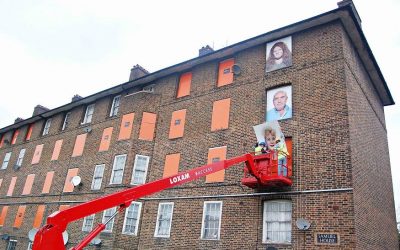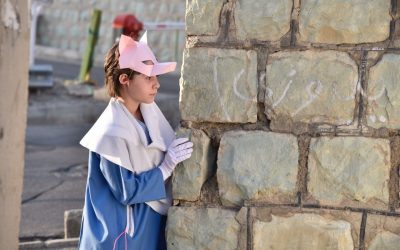by: Kianoosh Akhbari
Before delving into the subject, let us clarify that this discussion will not indulge in superficial praise of a filmmaker’s courage, nor will it attach hollow, overblown accolades to a work in a way that distracts from serious, critical engagement. This is not a space for customary cultural habits of thanking everyone involved in the production; rather, it is an invitation to confront the work rigorously and without pretense.
When faced with a film marked by its subversive dimensions—covert and underground filming, unveiled women, legal and security indictments, the filmmaker’s exile, global festival appearances, and the surrounding controversies—how should we respond? One perspective insists on adopting an “Iranian” lens, approaching the work from the standpoint of an oppressed Iranian viewer. Another prioritizes the gaze of the “Other,” emphasizing the accurate communication of the film’s message to external audiences. Some subordinate form to content, while others conflate form with technical execution. Still others, with vague and ill-defined criteria, declare, “This is not cinema!” Yet, if asked, “What then is cinema, and why does this film fail to meet that definition?” they offer no meaningful answer.

Kianoosh Akhbari
This essay does not aim to resolve all such contradictions or overlaps. Instead, it repeatedly advocates for a “critique from within” cinema itself. It seeks to demonstrate, at least to some extent, that understanding cinema as cinema and engaging with a film as a film allows us to formulate questions grounded in the objective reality of the film’s world—that is, its form. Only through this approach can we reflect meaningfully on the film’s engagement with political and social issues. Without grounding ourselves on this foundation (the film’s form), we risk drifting aimlessly into abstract and irrelevant musings.
By focusing on the formal aspects of the work—the tangible structure and cinematic language—it becomes possible to evaluate how the film navigates its political discourse and ideological concerns. A genuine critique emerges not from extraneous applause or condemnation but from situating the film within the realm of cinema and examining its internal mechanisms. In this way, cinema’s political function can be explored with clarity and depth, avoiding the pitfalls of shallow interpretation and reductive judgment.
The Politics of the Camera and the Reproduction of Oppression
First, let us clarify: incorporating a political event into a film, whether directly or indirectly, does not necessarily activate a political critique within the work. A film focusing on a family thrown into crisis by a sociopolitical movement inevitably invites political interpretations and discussions. It is natural for a political discourse to emerge around such a film. But before engaging in such debates, we must ask: what is the film’s stance on the relationship between this family and the real-world movement it depicts?
The film opens with a close-up of bullets belonging to an interrogator’s weapon and concludes with a shot of the interrogator’s hand emerging from the earth, clutching a second weapon—followed by closing images of the Woman, Life, Freedom movement. What happens between these two bookends? Rasoulof crafts a straightforward symbolic narrative: “The one who wields a weapon to suppress others ultimately meets their end by that very weapon.” But how does he depict this process?
From its beginning and ending, it becomes evident that this is primarily a film about a man, specifically a suppressor, and the issues he faces within his own family. The narrative perspective aligns with the man’s viewpoint. Although much of the story unfolds within the family home, we rarely gain insight into the daughters’ world. Instead, the focus often revolves around the question: “What must the women do to avoid upsetting the father or revealing their actions to him?” Everything must be kept in order relative to his gaze.
At this point, there is no inherent issue. The critique here is not a simplistic assertion that the film should have centered on a woman or adopted the daughters’ perspective. Rather, the problem lies in how Rasoulof’s camera aligns its gaze with that of the “male suppressor.”
The camera remains positioned at the height of an average adult, maintaining an eye-level perspective almost without exception. It rarely ventures lower to capture feet or below the waist, creating frames that, from a visual standpoint, could be described as unrefined or aesthetically unpleasing. These choices undermine the expressive potential of shot composition. The film predominantly uses medium shots, cutting repeatedly from one medium shot to another. This visual language is reminiscent of the aesthetic style ingrained in Iranian audiences from years of compulsory exposure to state television programs. The camera avoids shifts in angle or height, an intentional choice rather than a coincidence.
This politics of the camera reveals the film’s ideological position. While its narrative content does not side with the suppressors, its aesthetic reproduces their gaze. In scenes featuring the male character, the camera’s height aligns with his, causing shorter characters to be relegated to the lower parts of the frame. This suggests that the camera—and by extension, the director’s perspective—is constructed entirely around the suppressor’s viewpoint, rendering the director’s gaze indistinguishable from the man’s.
Even the film’s aspect ratio, 1.2:35, reinforces this dynamic. This wide framing seeks to encompass as much of the environment as possible, projecting a sense of dominance over space. Why would a film aiming to critique the weighty consequences of political crises and portray their internal collapse choose such a visual format?
It is not the critic’s role to propose alternative approaches for the filmmaker, as is often seen in reviews suggesting “this or that would have been better.” Instead, the critic’s task is to analyze how a film’s representational regime utilizes its tools and resources, uncovering the implications of these choices. In this case, the film’s aesthetic perpetuates the gaze of oppression, even as its narrative critiques it.
This camera height, shot composition, stable angles, and wide framing together do not suggest a film that aims to critique or render visible (one of the functions of critique) the situation it depicts. How do we reconcile this contradiction? How can we talk about a film whose intent is to, borrowing from Lukács’ terminology, link an individual life to the totality of life, while simultaneously maintaining a controlling, surveillance-based gaze on the events? Can this aesthetic policy connect the lived experience of these characters to the broader fate of all of us? Does independent cinema merely have the responsibility of presenting social-political or economic and cultural crises, without regard for its cinematographic impact on the audience? Shouldn’t the creation of a new cinema that deviates from the dominant aesthetics of the Islamic Republic since the revolution strive for a form that transcends the prevailing artistic principles? Isn’t it the filmmaker’s responsibility to create a form that matches the newly liberated space-time?
If we view the dominant representational regime and its aesthetic foundation in the works of filmmakers like Hatamikia, Darvish, Majidi, or Mahdavi, can we not argue that The Fig Tree Seeds of the Temples is both weaker and more regressive than theirs? Weaker because, at least, their films effectively communicate their messages and viewpoints, employing cinematic techniques to maximum emotional and intellectual impact. They push their intellectual ideas with force, utilizing the full potential of cinema to influence audiences. More regressive, however, because they are willing to fabricate realities in the process of producing meaning and solidifying prevailing ethics, particularly by representing the family in line with the hegemonic norms. Rasoulof, too, does exactly this. But we must be careful not to imply that Rasoulof should have depicted a family different from the ones in our society. No, we fully accept this family and its members. The regressive aspect of Rasoulof’s perspective is that he does not peer into the secret moments of the two daughters, does not render visible those unspoken elements that have always been censored in dominant representations.
The camera occupies a central position, framed in the widest shot possible, yet it is powerless to depict the critical dynamics within the family. Even a seemingly mundane moment, like the two daughters eating alone or a mother sitting in front of the television while her daughters bring her food, mirrors scenes we are all too familiar with from films and television. Apart from a few moments where the two daughters watch films from the movement on their phones—an excuse to incorporate archival images—we see nothing of their private lives. The reason for this is clear: the camera takes on a controlling, all-seeing perspective, incapable of capturing the fissures, ambiguities, and indeterminacies that exist in reality. This camera, which is set at the same height as the father of the family, uses a medium shot (without showing feet—perhaps to avoid evoking any sexual connotations!) and wide framing, yet it fails to extract the real from the symbolic scene it constructs.
When Independent Cinema Becomes a Tool of Propaganda
The father in this film is a character reminiscent of the morally conflicted figures from Iranian cinema—someone who is reluctant to sign an execution order, maintaining ethical standards, but is ultimately forced into violent actions by the pressures of external circumstances and directives from above. The story seems to revolve around showing how a good, dutiful, justice-seeking man, under external pressure at work and influenced by the libertine actions of his daughters and the manipulations of his wife, transforms into a violent and ruthless figure. It’s as if the narrative is suggesting that this man—who is initially a respectable, conscientious man—is pushed into brutality by the forces around him.
This is a man who, if not for the need to provide a three-room house and a comfortable life for his daughters, might have never accepted the injustices in his workplace. If his daughters had not picked up his gun to humiliate him, or if his wife hadn’t lied to him, perhaps he would have remained a better person, not committing such atrocities. We are shown this transformation in a pivotal scene where, after returning home late and disheveled, his wife asks, “Your job has changed, but has you changed too?” Yes, the film is about the change of a righteous man, and this political context—whose true responsibility is unclear—even transforms the seeker of justice into a different man. He is the same compassionate man who sacrifices for the well-being of his children, but now, as an ideological and religious person, he makes errors, dragging his family and himself into a downward spiral. This is the narrative that Rasoulof’s storytelling, framing, and editing convey.
At this point, I will not delve into the acting and scene construction, which are glaringly evident and perhaps the film’s biggest flaw. If we want to engage with his narrative world, we find that it doesn’t offer much besides the feel of one of those tedious television series, where the only difference is that the women don’t wear hijabs. The problem is not merely that the dialogues are exaggerated and fake. The issue is that the scenes fail to build a cohesive structure to advance the story, forcing the director’s ideological agenda to be rushed and crammed into the dialogue. After the name of the interrogator is leaked online, he flees to his family’s home, only to suddenly explode with anger, searching for the “liar.” We are given no clear indication of where this level of violence comes from. It’s as if the director just wanted a scene like this and abruptly throws us into this situation. The father, who is initially concerned for his job, reputation, and family’s safety, suddenly turns into an immoral villain, unable to tolerate the lies anymore. Rasoulof had nearly two and a half hours to develop this character into an explosive villain, but instead, he presents him as a misguided moralist, more anxious than malicious. The pivotal event, the daughter stealing the father’s pistol, is never clarified. We are left in the dark about why the daughter acts this way. The motivations of the daughter remain hidden because, once again, the male oppressor’s gaze overshadows the film: we are not meant to understand the daughter’s motivation or even to know much about the daughters at all. They are simply instruments of mischief, existing for us to see what happens to this unfortunate man.
I will briefly touch on one or two more points and then move on.
As someone who has watched a variety of genres over the years, and whose favorite genres are horror, thriller, and fantasy, I have seen countless scenes where monsters or villains are in pursuit of seemingly innocent people. We’ve all seen such chase scenes in films and TV shows. The reasons for the chase vary: one person is fighting for their life, another is seeking revenge, one can’t find an escape route, another is in a place where there’s no escape and must kill the monster, and so on. But I don’t understand why, at the end of The Fig Tree Seeds of the Temples, after the women escape, they don’t get into the car, and they don’t even try to flee. It’s as if they are guided into a maze-like location for the final confrontation. Why did they separate? When people separate in such moments, the intention is usually to trick the monster and strike back. But here, we have a childish game of hide-and-seek, and it’s unclear what they are running after, why they are running, or why they keep moving from one hole to another. In a moment when the man confronts his wife, she says, “Move aside, I want to go!” Wasn’t she free to leave before this? Where does she want to go now that she couldn’t go before entering this labyrinthine fortress? Why are the woman and two daughters each separately playing hide-and-seek in the maze? Because the director, like those filmmakers mentioned earlier, wants to arrange the scenes to fit his desired outcomes without regard for who his characters are or what they are doing. This is the result of propaganda filmmaking, and it doesn’t matter which side you are on.
The Subtle Shades of Neutrality: Cinema as Witness or Accomplice?
Let us return to the discussion of form. One could introduce a subtle point here, suggesting that “this formal choice signifies a neutral narrator who wishes to view events objectively (i.e., in an objective manner) with minimal ethical or political interference in the film.” This subtlety draws attention to an interesting point. The claim is that the filmmaker intends to rescue the visual and auditory apparatus through a display of neutrality, in the style of neorealism or perhaps the objectivism of post-expressionist Germany. However, our response is that in both of these movements, the external world, the city, communities, riots, social injustices, and political deadlocks are presented in such a way that even if you place the camera before them, they convey their meaning on their own. While this very perspective itself is problematic, even if we accept that facts reveal their meaning by themselves, we are still not dealing with a medium shot or the perspective of a tall, controlling observer in these films. In these works, the découpage and montage do not cease in an attempt to claim neutrality. In a film such as Die Straße des Unglücks (1925), the great masterpiece by Georg Wilhelm Pabst, we are confronted with compositions that, as Siegfried Kracauer argues, “irrefutably emphasize the connection between individual suffering and social injustice.” Similarly, in the cinema of Rossellini and De Sica, we are witness to the cinematic testimony of history, where meaning is generated either through the camera or montage, creating a world worthy of portraying the tragedies of their era. At the very least, even in the most minimal cinematic treatments, we encounter spaces or characters that emphasize their documentary nature and maintain their relationship with the concrete reality. When the external world cannot be depicted (or cannot be depicted due to censorship) and we are confined to interior spaces, then what remains for us are the cinematic capacities as communicative and perceptual tools.
Thus, our final answer to that subtle point is: 1) Neutrality in cinema (perhaps in any medium or art) is a fantasy, as such a claim, rather than being faithful to the facts and reality, serves to neutralize the intellectual impact of reality; 2) Neutrality in cinema does not mean the suspension of the cinematic apparatus, as the suspension of the cinematic apparatus does not necessarily disable the apparatus of cinema, and does not serve intellectual engagement.
Let us not go too far. Let us consider the film The Zone of Interest (2023) by Jonathan Glazer. The film, for many reasons, including being made in a freer environment with a larger budget and more resources, cannot be directly compared to the difficult filmmaking conditions faced by Rassulof in Iran. However, by using this film as an example, we can clarify our point. In this film, the camera generally takes on a hidden or controlling role, observing its subjects from a distance. The narrative of the film revolves around the commander of Auschwitz (Christian Friedel) and his wife (Sandra Hüller). Here, we are again confronted with the family of a German oppressor, but all cinematic capacities—including the expressiveness of the camera and sound—are employed to internalize a vast terror and depict the family’s internal decay. The dimensions of the screen are intentionally set to modern TV proportions, 1:1.78, even narrower than Rassulof’s film. Glazer adopts this distancing technique to deliberately bring us closer to the horror and tragedy. Not only does he avoid traditional cinematic devices, steering clear of familiar melodies (such as the crude use of Kurdish music in The Fig Tree), but also he exposes the dimensions of the tragedy in a strange and profound way, bringing our ignorance of such events to the forefront, showing how we ignore the evil that exists in the world. However, the predominant representations in Iran—whether in underground theater or underground cinema—are often based on expressive melodrama and the creation of nostalgic sentiments. The relationship with the “Women, Life, Freedom” movement or the Jina revolution only leads us to the abyss of tears, lament, and regret. This reverts to the dominant cultural representation: crying over misfortune, complaining about the situation, and finally arriving at a moral conclusion. In contrast, recall the terrified gaze of the Auschwitz commander in the empty hallway facing the camera.
I will now mention two more scenes and conclude the discussion. There are two scenes in the film where the director processes them differently: one where the woman (mother) tends to the wounds of the shot daughter, and another where the same woman (wife) washes and prepares her husband in the bath. In both these scenes, the camera moves to close-up and extreme close-up, the lighting becomes ethereal, and soft filters are used. What is the similarity between the shot girl in the street and the signing monster? To the director, it seems there is no difference. Even the man in the bath is given more attention—under the water, he is almost baptized and purified, his face transformed into a divine, angelic image, with the sound from outside his frame heard subjectively, as he discusses the complexities of his work and his misfortune in timing his career advancement with the chaos around him. In contrast, the blind girl in the scene has no sound, and we are only meant to feel sorrow through the sight of her wounds—forget about thought! In both scenes, Kurdish music enters the scene to fulfill the director’s debt to the origin of the movement and pass over it. Therefore, it is not unfounded to say that the film sides with the oppressor, and we are required to share in his pain and suffering.
Conclusion
Making a political film based on a political subject (object) can never fully reveal the intricacies, aspects, and consequences of politics. The reason is that politics is not an object (subject) but, as Emmanuel Barot states, “a relation in becoming, a set of practices that cinema sees as its mission to reflect and echo” (Le politique n’est pas un objet, c’est un rapport en devenir, un ensemble de pratiques). In other words, cinema, only as cinema, can fulfill its mission. When we hastily and painfully attempt to express the emotions and intellectual tensions arising from a difficult political situation, the result is that many of our cinematic or artistic works circulate in the same language, without transcending the current position or paying attention to the intellectual and spiritual progress born from the events of 1401. They provide only a fleeting and excited view of the world, failing to tell anything significant about their own history. Let us set aside the reconstruction of history on behalf of the oppressed, which is the primary mission, and we still have a long way to go before its realization. As Gramsci taught us: “Art is educational as art, not as educator” (l’art est éducateur en tant qu’art et non en tant qu’éducateur). We must learn that cinema, through cinema itself, must educate and raise awareness, not when it seeks to be a teacher. And it is here that we can say that cinema, as cinema, is an embodiment of the political act itself; otherwise, it inadvertently aligns itself with the dominant discourse.
November 3, 2022, Tehran


